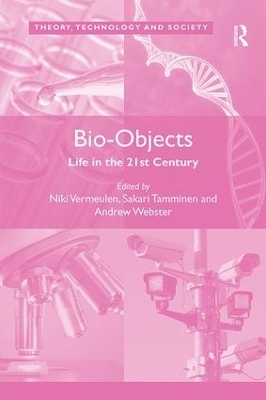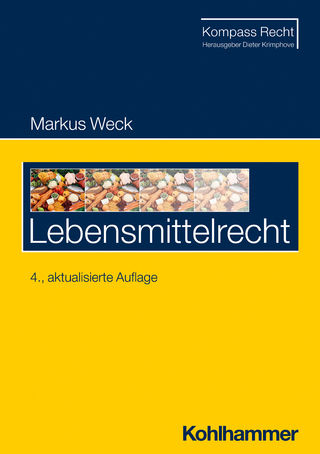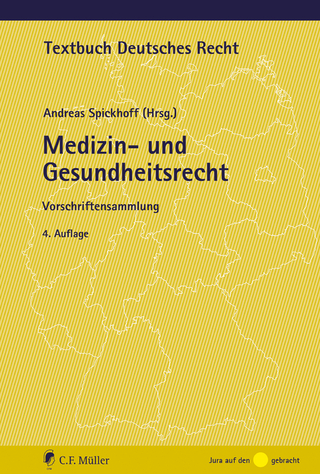
Bio-Objects
Routledge (Verlag)
978-1-138-30650-9 (ISBN)
Increasing knowledge of the biological is fundamentally transforming what life itself means and where its boundaries lie. New developments in the biosciences - especially through the molecularisation of life - are (re)shaping healthcare and other aspects of our society. This cutting edge volume studies contemporary bio-objects, or the categories, materialities and processes that are central to the configuring of 'life' today, as they emerge, stabilize and circulate through society. Examining a variety of bio-objects in contexts beyond the laboratory, Bio-Objects: Life in the 21st Century explores new ways of thinking about how novel bio-objects enter contemporary life, analysing the manner in which, among others, the boundaries between human and animal, organic and non-organic, and being 'alive' and the suspension of living, are questioned, destabilised and in some cases re-established. Thematically organised around questions of changing boundaries; the governance and regulation of bio-objects; and changing social, economic and political relations, this book presents rich new case studies from Europe that will be of interest to scholars of science and technology studies, social theory, sociology and law.
Niki Vermeulen is Lecturer in the History and Sociology of Science at the University of Edinburgh, UK, Sakari Tamminen is an Academy of Finland postdoctoral researcher at the University of Helsinki, Finland. Andrew Webster is Professor of the Sociology of Science & Technology and Director of the Science and Technology Studies Unit at the University of York, UK
Chapter 1 IntroductionBio-Objects: Exploring the Boundaries of Life, Andrew Webster; Part 1 Changing Boundaries of Human, Nonhuman and Society; Chapter 1a Challenging Bio-objectification: Adding Noise to Transgenic Silences, Tora Holmberg, Malin Ideland; Chapter 2 Pluripotent Promises: Configurations of a Bio-object, Lena Eriksson; Chapter 3 Water '“ An Exploration of the Boundaries of Bio-objects, Ragna Zeiss; Chapter 4 Bio-objectification of Clinical Research Patients: Impacts on the Stabilization of New Medical Technologies, Conor M.W. Douglas; Part 2 Governing Bio-Objects; Chapter 5 Beasting Biology: Interspecies Politics, Nik Brown; Chapter 6 Comparing Public Engagement with Bio-objects: Implementing Co-existence Regimes for GM Crops in Denmark, the UK and Germany, Janus Hansen; Chapter 7 Governing Hereditary Disease in the Age of Autonomy: Mutations, Families and Care, Aaro Tupasela; Chapter 8 At the Margins of Life: Making Fetal Life Matter in Trajectories of First Trimester Prenatal Risk Assessment (FTPRA), Nete Schwennesen; Part 3 Generative Relations; Chapter 9 The Fruit of Love: The German IVF-embryo Turning from Abject into Bio-object, Bettina Bock von Wülfingen; Chapter 10 On Why States Still Matter: In vitro Fertilization Embryos between Laboratories and State Authorities in Italy, Ingrid Metzler; Chapter 11 Growing a Cell in Silico: On How the Creation of a Bio-object Transforms the Organisation of Science, Niki Vermeulen; Chapter 12 Genetic Discrimination 2.0: The Un/Differentiating Gene in Insurance, Ine Van Hoyweghen; Chapter 13 Still Life? Frozen Gametes, National Gene Banks and Re-configuration of Animality, Sakari Tamminen;
| Erscheinungsdatum | 31.08.2017 |
|---|---|
| Reihe/Serie | Theory, Technology and Society |
| Verlagsort | London |
| Sprache | englisch |
| Maße | 156 x 234 mm |
| Gewicht | 453 g |
| Themenwelt | Geisteswissenschaften ► Philosophie |
| Naturwissenschaften | |
| Recht / Steuern ► EU / Internationales Recht | |
| Recht / Steuern ► Privatrecht / Bürgerliches Recht ► Medizinrecht | |
| Sozialwissenschaften ► Soziologie | |
| ISBN-10 | 1-138-30650-9 / 1138306509 |
| ISBN-13 | 978-1-138-30650-9 / 9781138306509 |
| Zustand | Neuware |
| Haben Sie eine Frage zum Produkt? |
aus dem Bereich


